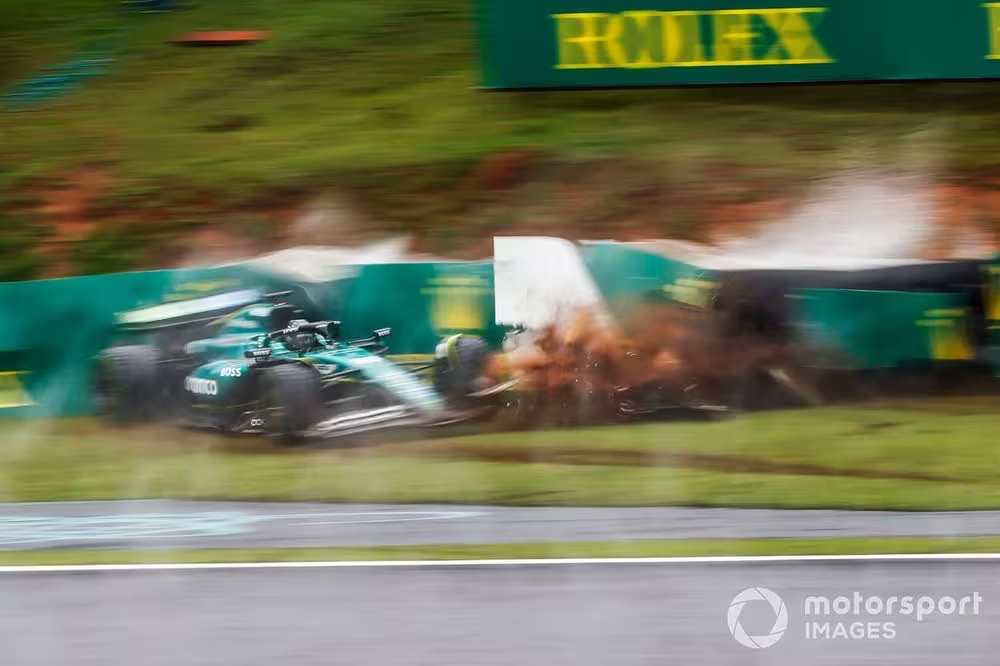Aston Martin has got to the bottom of its troubled Brazilian Grand Prix that left Lance Stroll out on the formation lap and Fernando Alonso battling extreme bouncing.
The Silverstone-based team endured a hugely challenging race afternoon at Interlagos as Stroll spun into the wall on the formation lap after his rears unexpectedly locked, before he managed to beach himself in the gravel.
Then Alonso struggled throughout with similar rear locking issues plus excessive porpoising that left him struggling with back pain at the end, but he was determined to push on and see the chequered flag.
Speaking on the team radio at the time, Alonso, who finished 14th, admitted that something unusual was happening. “This bouncing is not normal,” he said.
With no immediate explanation for what happened on both cars, Aston Martin has spent some time since returning to its factory trying to get a better comprehension of the factors at play.
It now suspects that the problems on both cars were triggered by a super nervous rear-end characteristic that had been introduced as a result of car changes made following the qualifying crashes the team suffered on Sunday morning.
Both Stroll and Alonso had hit the barriers in the wet qualifying session, damaging the Suzuka-concept specification floors the team had intended to run for the Interlagos event.
Lance Stroll, Aston Martin AMR24, crashes out
Photo by: Andrew Ferraro / Motorsport Images
With no spares of that specification available, Aston Martin had to revert to a previous floor version – which was the one it first introduced at the Hungarian GP.
Normally teams cannot change specs between qualifying and the race, as that is a breach of parc ferme regulations and mandates a pitlane start.
However, things are different on a sprint race weekend when allowances are made if there is a shortage of spare parts.
Article 40.4 says at sprint weekends teams can change specification if they can “demonstrate there is a shortage of parts, and provided that the replacement part is of a specification that has been previously used in a qualifying session or a race”.
It was this rule that Mercedes used at the United States GP to allow George Russell to go back to an older specification of floor following his qualifying crash.
The complication for Aston Martin, however, was that the change of floor had to be made without it being able to alter the mechanical set-up around it – as suspension…
Click Here to Read the Full Original Article at Motorsport.com – Formula 1 – Stories…

